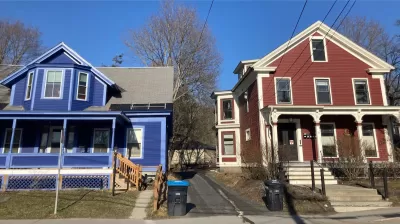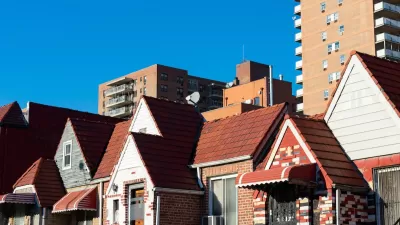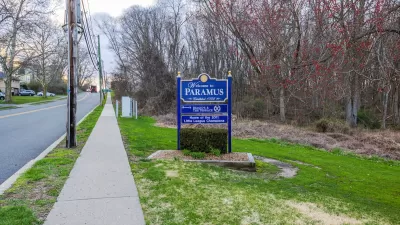The state wants to encourage mid-density development to ease the housing crisis and provide a wider variety of housing options for residents.

A new ‘Homes for All Toolkit’ released in March by the Vermont Department of Housing and Community Development aims to streamline and clarify the development process for missing middle housing. Amy Love Tomasso describes the toolkit for Congress for New Urbanism.
The document provides a guide for small-scale builders and community leaders, highlighting the benefits of small and mid-sized multifamily housing projects.“These home types, which include accessory dwelling units (ADUs), duplexes, small-scale multi-household buildings, and neighborhood-scale mixed-use/live-work buildings, are rooted in Vermont’s traditional development pattern and the New England vernacular style.” Yet over the last century, these traditional housing types have been legislated out of existence.
According to Tomasso, the toolkit “is the start of a movement to bring missing middle housing back to Vermont communities, an opportunity to grow a new generation of developers who value ‘return on community’ as much as return on investment.”
The state plans to pre-approve plans for four different missing middle housing types to make permitting and building easier and more affordable. While cities like Los Angeles have done this at the local scale, Vermont would be the first to issue a statewide pre-approved plan set.
FULL STORY: Vermont is bringing back missing middle housing

Study: Maui’s Plan to Convert Vacation Rentals to Long-Term Housing Could Cause Nearly $1 Billion Economic Loss
The plan would reduce visitor accommodation by 25,% resulting in 1,900 jobs lost.

North Texas Transit Leaders Tout Benefits of TOD for Growing Region
At a summit focused on transit-oriented development, policymakers discussed how North Texas’ expanded light rail system can serve as a tool for economic growth.

Using Old Oil and Gas Wells for Green Energy Storage
Penn State researchers have found that repurposing abandoned oil and gas wells for geothermal-assisted compressed-air energy storage can boost efficiency, reduce environmental risks, and support clean energy and job transitions.

Private Donations Propel Early Restoration of Palisades Playground
Los Angeles has secured over $1.3 million in private funding to restore the Pacific Palisades playground months ahead of schedule, creating a modern, accessible space that supports community healing after recent wildfires.

From Blight to Benefit: Early Results From California’s Equitable Cleanup Program
The Equitable Community Revitalization Grant (ECRG) program is reshaping brownfield redevelopment by prioritizing projects in low-income and environmental justice communities, emphasizing equity, transparency, and community benefits.

Planting Relief: Tackling Las Vegas Heat One Tree at a Time
Nevada Plants, a Las Vegas-based nonprofit, is combating the city’s extreme urban heat by giving away trees to residents in underserved neighborhoods, promoting shade, sustainability, and community health.
Urban Design for Planners 1: Software Tools
This six-course series explores essential urban design concepts using open source software and equips planners with the tools they need to participate fully in the urban design process.
Planning for Universal Design
Learn the tools for implementing Universal Design in planning regulations.
Ascent Environmental
Borough of Carlisle
Institute for Housing and Urban Development Studies (IHS)
City of Grandview
Harvard GSD Executive Education
Toledo-Lucas County Plan Commissions
Salt Lake City
NYU Wagner Graduate School of Public Service





























